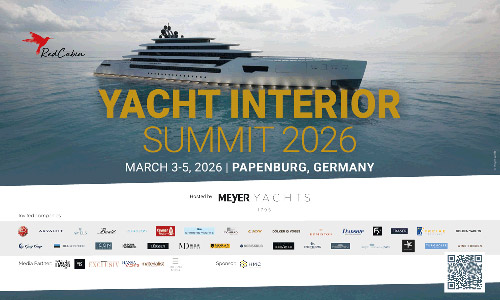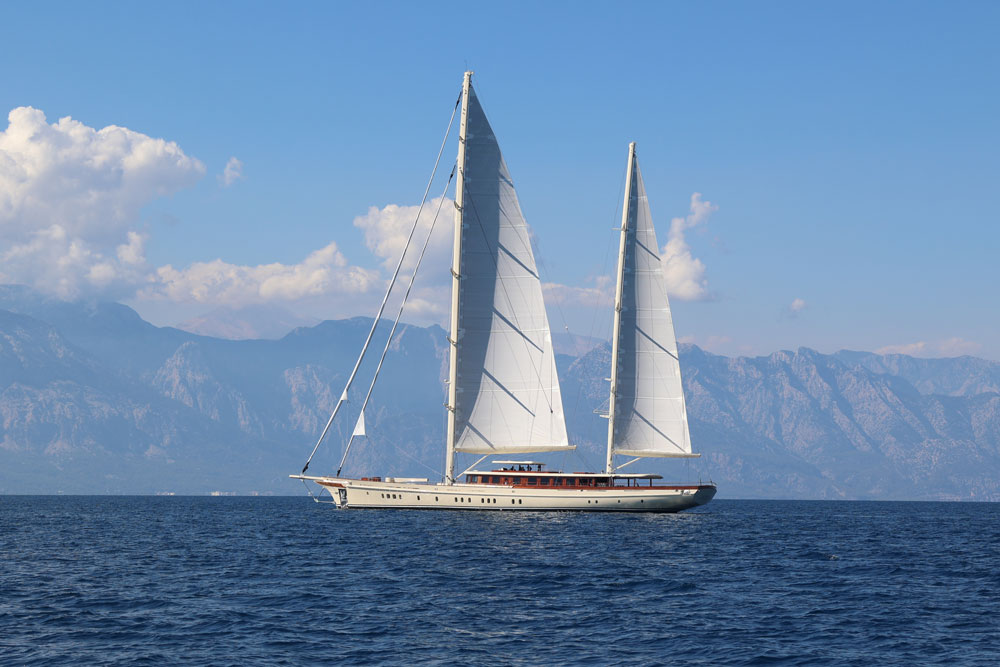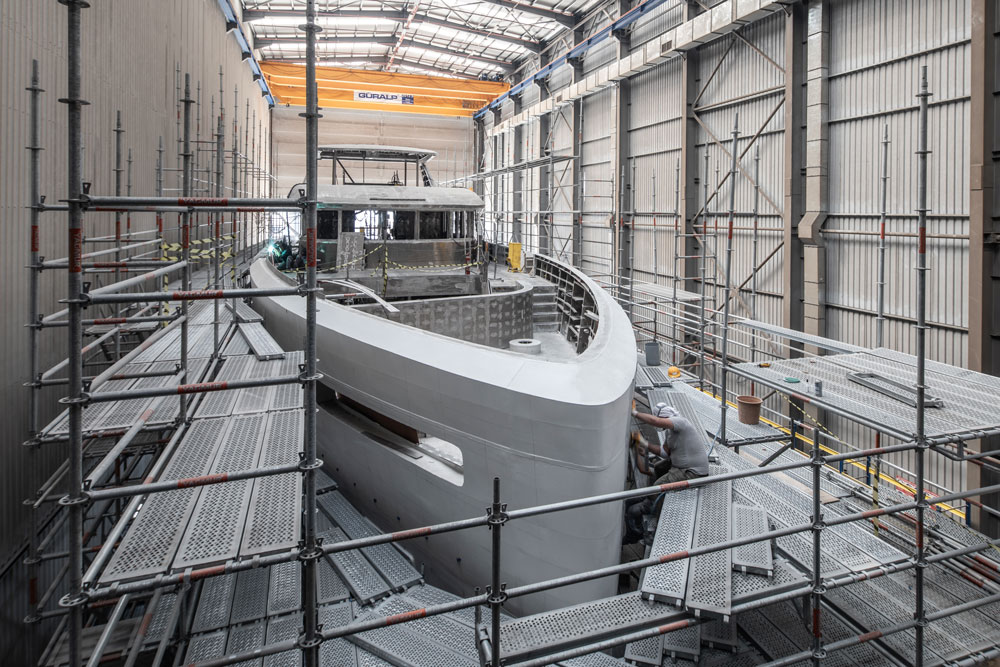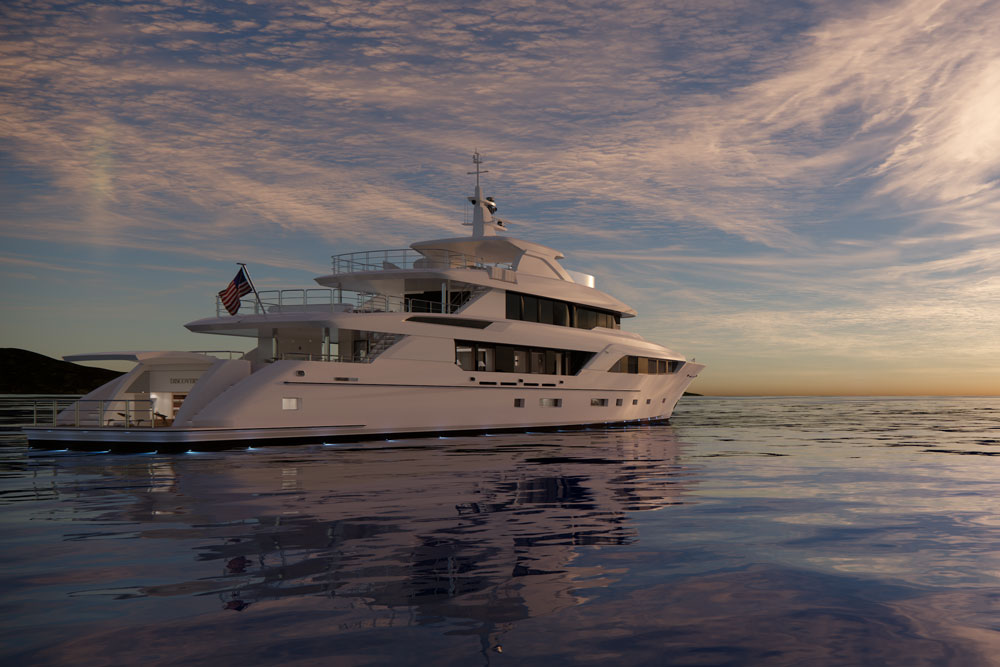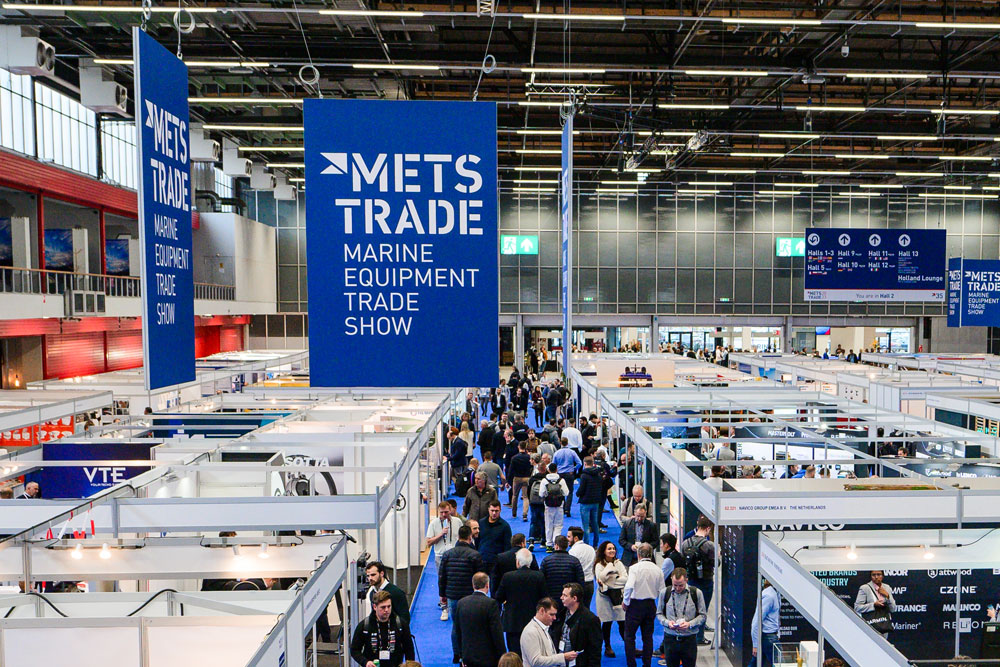With the Dragonfly superyacht concept, Dixon Yacht Design has shown how modern solid-wing systems can be used to combine efficiency, range and design aesthetics on yachts.
Following initial successes in merchant shipping – for example on ships such as the “Canopée ” – wind sail technology is now also finding its way into the yacht industry.
This is demonstrated by the British design studio Dixon Yacht Design, among others, which has now presented a concept for the superyacht “Dragonfly”. The concept, equipped with modern solid-wing systems, is intended to demonstrate that efficiency, range and design aesthetics can also be combined on superyachts.
The “Dragonfly” is a >500 GT catamaran. It is equipped with the Aero Wing Sail system from Rondal. It is made of lightweight materials, is free-standing and can rotate completely around its vertical axis.
Several flaps regulate the camber to control the performance of the wing. To reduce the sail force, these flaps can twist along the span – up to a reversal at the upper end to create a righting moment. At rest, the wing points freely into the wind; in bad weather, it can be feathered horizontally.
According to the design studio, it developed the “General Arrangement” in collaboration with Michael Leach Design, a firm with extensive experience in designing large superyacht catamarans.
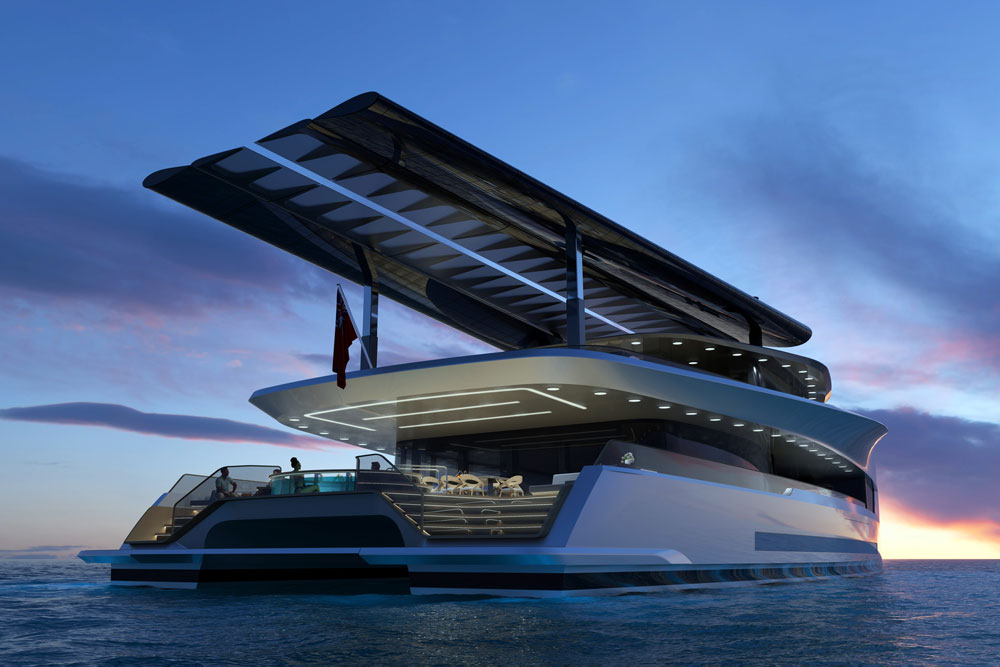
A spacious on-deck saloon connects to the aft deck and beach areas, free from tenders housed amidships. A multi-level bathing platform provides comfortable access to the water.
Forward, the accommodation can be configured as a large owner’s suite or as two VIP cabins with a sliding partition – both with direct access to the foredeck. There are four spacious guest cabins in the hulls, while crew quarters, mess and technical rooms are located in the forward area.
The upper deck has an open design with unobstructed views forward and aft. Sliding glass walls offer protection from the wind when at anchor. Sustainable options include solar panels integrated into the superstructure and optionally on the wings.
Louvred glass panels provide natural ventilation above the dining and bar area. An external helm station is designed to provide good visibility for navigation and maneuvering.
The “Dragonfly” is to be built partly from recycled aluminum alloy and will also feature an energy recovery system on the propeller and solar power.








